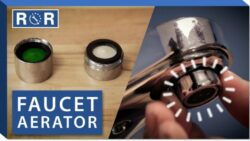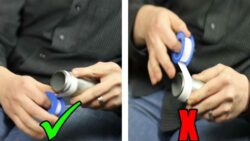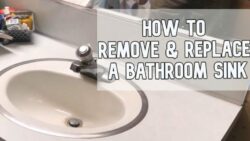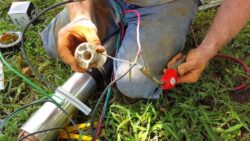In this article, you will discover a range of effective methods to successfully unclog an overflowing toilet. Whether you are faced with a sudden emergency or looking for preventative measures, these proven techniques will guide you through the process with ease. From utilizing a plunger with precision and knowing when to call in professional help, to using common household items as alternative solutions, this article aims to equip you with the knowledge and tools needed to tackle any clog-related inconvenience swiftly and efficiently.
Understanding the Problem
Identifying the signs of an overflowing toilet
When faced with an overflowing toilet, it is important to quickly identify the signs to address the issue promptly. The most obvious sign is water overflowing from the toilet bowl, which can cause significant damage to the surrounding area if not handled promptly. The water may also be accompanied by unpleasant odors and the potential for sewage to back up. It is essential to act immediately to prevent further damage and resolve the issue.
Determining the cause of the clog
To effectively unclog an overflowing toilet, it is vital to determine the underlying cause of the clog. Common causes include too much toilet paper, foreign objects, or a buildup of waste over time. By identifying the cause, you can choose the most appropriate unclogging method and avoid future incidents. If the problem persists or is not evident, it might be necessary to seek professional assistance.
Preparation
Gather the necessary tools and supplies
Before attempting any unclogging methods, it is crucial to gather the necessary tools and supplies. Having these items readily available can save time and ensure a more efficient process. Key tools to have include a plunger, toilet auger, wet/dry vacuum, and a pair of rubber gloves. Additionally, having a bucket, towels, and a disinfectant solution on hand can help protect the surrounding area and maintain cleanliness throughout the unclogging process.
Protect the surroundings
Unclogging an overflowing toilet can be a messy process, so it is essential to take precautions to protect the surrounding area. Place towels or plastic sheets on the floor near the toilet to catch any water or waste that may spill during the unclogging process. By doing so, you can prevent damage to flooring, cabinets, or other nearby fixtures. Additionally, make sure to close the bathroom door to contain any odors and minimize the spread of bacteria.
Basic Methods to Try
Using a plunger
One of the most common and effective methods to unclog an overflowing toilet is by using a plunger. To use a plunger, place the rubber cup of the plunger over the drain hole in the toilet bowl. Apply downward pressure and then pull upward in a rapid motion. This action creates suction that can dislodge the clog and allow water to flow freely. Repeat this process several times, and if successful, the water should begin to drain. If the plunger method doesn’t work, it’s time to move to the next solution.
Pouring hot water into the toilet bowl
If a plunger fails to resolve the issue, pouring hot water into the toilet bowl is another simple yet effective method to try. Boil a pot of water and carefully pour it into the toilet bowl from a height of about waist level. The hot water can help soften the clog and break it apart, allowing it to pass through the drain. It is essential to exercise caution when handling boiling water and avoid splashing or scalding yourself. Give the hot water some time to work its magic before attempting to flush the toilet.
Using a toilet auger
For more stubborn clogs that cannot be easily resolved with a plunger or hot water, a toilet auger can prove to be a useful tool. A toilet auger, also known as a plumber’s snake, is a flexible rod with a coiled wire at one end. Insert the auger into the toilet bowl, rotating the handle clockwise as you push it through the drain. If you encounter resistance, rotate the handle counterclockwise to break up the clog. Once the auger has made its way through the clog, pull it out and flush the toilet to check if the issue has been resolved.
Using Household Ingredients
Baking soda and vinegar
Household ingredients such as baking soda and vinegar can be effective in unclogging a toilet and are often environmentally friendly options. Start by pouring one cup of baking soda into the toilet bowl, followed by two cups of vinegar. The combination of these two ingredients will create a fizzing reaction that can help break down the clog. Let the mixture sit for about 30 minutes to an hour, and then flush the toilet to check if the clog has been successfully cleared.
Dish soap
Dish soap is another common household ingredient that can help loosen a stubborn clog in an overflowing toilet. Squirt a generous amount of dish soap into the toilet bowl and let it sit for about twenty minutes. The soap will act as a lubricant and can help break down the clog, allowing it to slide through the drain more easily. After sufficient time has passed, flush the toilet to see if the clog has been resolved.
Ammonia
Ammonia can be a potent solution for unclogging an overflowing toilet, but it should be used with caution due to its strong chemical properties. To use ammonia, dilute it with water according to the manufacturer’s instructions. Carefully pour the diluted ammonia into the toilet bowl and let it sit for about an hour. The ammonia’s chemical composition can help dissolve fat, grease, and other organic matter contributing to the clog. After the recommended time has passed, flush the toilet to see if the clog has been cleared.
Chemical Solutions
Commercial drain cleaners
Commercial drain cleaners can provide a powerful and convenient solution for unclogging an overflowing toilet. However, it is important to follow the product’s instructions carefully and use them sparingly. These drain cleaners typically contain strong chemicals that can damage pipes and fixtures if used excessively. Pour the recommended amount of drain cleaner into the toilet bowl, and let it sit for the specified duration. Afterward, flush the toilet to see if the clog has been effectively cleared.
Bleach
Bleach is another chemical solution that can potentially help unclog an overflowing toilet. However, it should be used with caution, as it can be harmful to your health and plumbing system if used improperly. Make sure the bathroom is adequately ventilated before proceeding. Carefully pour about a cup of bleach into the toilet bowl, then let it sit for a few hours. The bleach’s strong oxidizing properties can help break down the clog, but exercise caution and be mindful not to mix bleach with other cleaning products to avoid hazardous chemical reactions. Flush the toilet after the recommended time to check if the clog has been cleared.
Advanced Techniques
Removing the toilet to access the clog
In more severe cases where basic methods and household ingredients have failed to resolve the overflowing toilet issue, removing the toilet to access the clog may be necessary. This method should only be attempted by those with experience or under the guidance of a professional. Begin by shutting off the water supply to the toilet and detaching the water supply line. Next, remove the nuts securing the toilet to the floor and carefully lift the toilet off the flange. With access to the drain pipe, use a plumber’s snake or another appropriate tool to clear the clog. Once the clog is removed, reassemble and reinstall the toilet.
Using a wet/dry vacuum
A wet/dry vacuum can be a powerful tool to remove excess water and unclog an overflowing toilet. Ensure the vacuum is capable of handling liquids, and attach an appropriate attachment for use in the toilet bowl. Place the attachment into the toilet bowl and create a seal around the drain hole. Turn on the vacuum and allow it to draw out the water and potentially dislodge the clog. Repeat the process several times until the water level in the toilet bowl has significantly reduced and the clog is cleared.
Snaking the toilet drain
Snaking the toilet drain involves using a specialized tool called a toilet auger or snake to physically break up the clog. Insert the snake into the toilet bowl and carefully maneuver it through the drain, rotating the handle as needed. As the snake reaches the clog, continue to rotate and apply pressure to break it apart. Once the clog is successfully dislodged, remove the snake and flush the toilet to ensure the issue has been resolved.
Preventing Future Clogs
Proper toilet maintenance
To prevent future clogs and avoid the inconvenience of an overflowing toilet, it is important to practice proper toilet maintenance. Regularly clean and inspect the toilet bowl, ensuring there are no visible signs of buildup or potential clogs. Avoid flushing excessive amounts of toilet paper or flushing items that are not intended for toilet use, such as wipes or feminine hygiene products. Encourage everyone in the household to follow these guidelines to maintain a properly functioning toilet.
Being mindful of what gets flushed
An overflowing toilet can often be prevented by being mindful of what is flushed down the drain. Educate household members on what can and cannot be flushed. Items such as paper towels, dental floss, cotton balls, or other non-biodegradable materials should be disposed of in the trash rather than the toilet. By being conscious of what goes into the toilet, you can greatly reduce the risk of clogs and the need for unclogging measures.
Calling for Professional Help
When to call a plumber
In some cases, unclogging an overflowing toilet may require the expertise and tools of a professional plumber. If basic methods, household ingredients, or advanced techniques have failed to resolve the issue, it is advisable to call a plumber. Additionally, if you are uncomfortable or unsure about attempting any of the unclogging methods yourself, contacting a plumber from the beginning can help avoid potential damage or further complications.
Finding a reputable plumber
When seeking professional help for unclogging an overflowing toilet, it is essential to find a reputable plumber. Ask friends, family, or neighbors for recommendations, or search for local plumbing companies online and read reviews. Look for plumbers who are licensed, insured, and have a good reputation for their quality of work. It is also wise to compare quotes and ensure the plumbers are transparent about their pricing structure. By choosing a reputable plumber, you can have peace of mind knowing that your toilet will be unclogged properly and efficiently.





